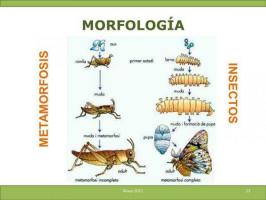Differences between viviparous, oviparous and ovoviviparous animals
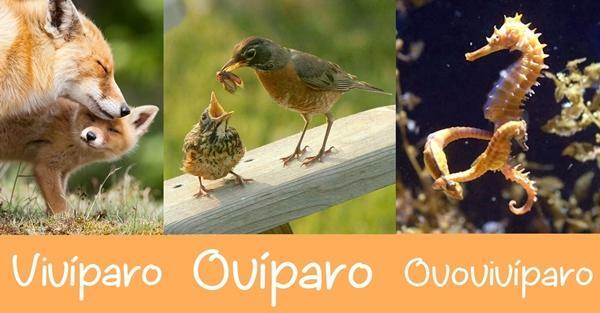
Image: Visual Avi
The reproduction of living beings it is one of the most important elements of our world, with a myriad of different ways of preserving the various species that occupy our planet. As for animals, both sexual and asexual types of reproduction can be observed, with up to three types of sexual reproduction. To know these types, in this lesson from a TEACHER we are going to differences between viviparous, oviparous and ovoviviparous animals.
Index
- Viviparous: definition and characteristics
- Oviparous: definition and characteristics
- Ovoviviparous: simple definition
- 5 differences between viviparous, oviparous and ovoviviparous
Viviparous: definition and characteristics.
The viviparousare all those animals whose reproduction is based on the fact that the embryo develops within the womb, being the consequence of a sexual relationship between a male and a female of the species. Viviparity is one of the three kinds of sexual reproduction of animals, the most characteristic of the great majority of mammals, although there are other classes of animals that also they perform it.
Depending on the way in which the animals are formed within the mother, we can speak of two types of viviparity, which are the following:
- Histotrophic viviparity: zygotes develop within the mother's oviducts, feeding on the tissues of the maternal body.
- Hemotrophic viviparity: the young are fed by placenta, being the most common kind of viviparity, and characteristic of placental mammals.
6 characteristics of viviparous animals
Although there are two types of viviparity, a series of common characteristics can be observed, which differentiate this kind of reproduction from others. Some of the characteristics of viviparous animals are as follows:
- The vast majority of viviparous are of the class hemotrophic, Therefore, the embryo is nourished through the placenta, through the umbilical cord.
- Viviparous females suffer several internal and external changes During pregnancy.
- Viviparous pregnancy can vary greatly depending on the species.
- The fertilization of viviparous is internal.
- Have maternal instinct, caring for the young until it is able to take care of itself.
- The young of the viviparous are born mature.
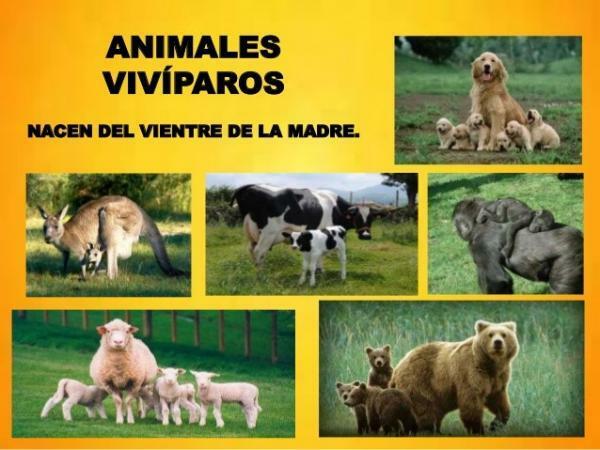
Oviparous: definition and characteristics.
The oviparousare those animals whose reproduction is based on egg laying, from which their descendants are born. For this reason, oviparous animals finish their evolution outside their mother, unlike viviparous animals that finish their evolution inside their mother.
Like the viviparous, there are two kinds of oviparity, depending on where fertilization takes place. The first class is that of animals with dried eggs, which have a internal fertilization, so the mother lays the eggs after being fertilized. The other class is that of animals with soft eggs, which deposit the eggs outside before being fertilized.
Oviparous characteristics
All oviparous have a number of characteristics in common, which make them unique, and differentiate them from other types of reproduction. Some of these characteristics are the following:
- Breeding feeds inside the egg, thanks to the nutrients found inside.
- The number of eggs laid can vary greatly depending on the species.
- Many species create nests to place their eggs, where they incubate giving them heat until they hatch.
- The young are not fully developed until they hatch from the egg, leaving the mother at an early stage.
- They are species with high mortality, since the eggs are part of the diet of certain carnivorous animals.
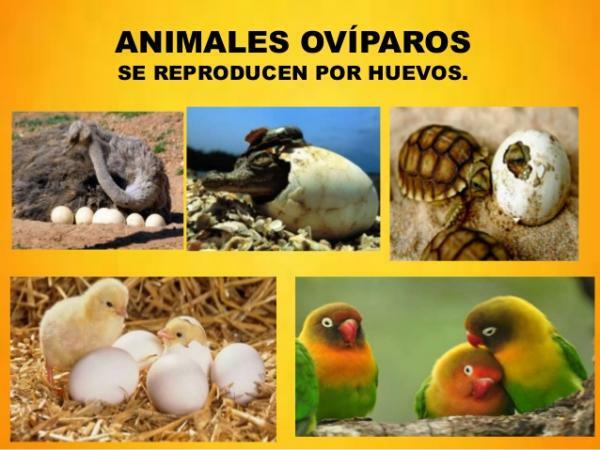
Image: The Adventure of Learning
Ovoviviparous: simple definition.
To continue this lesson on the differences between viviparous, oviparous, and ovoviviparous animals, we must talk about oviparous, a kind of reproduction that mix characteristics of viviparous and oviparous.
Ovoviviparous are those animals that they lay eggs, but these remain inside the mother until they are fully developed. The hatching of the eggs in this kind of reproduction can take place before parturition, or just after, depending on the species.
This kind of reproduction can be seen in some invertebrates, and reptiles, although the main species that carry it out are fish, especially some kinds of sharks.
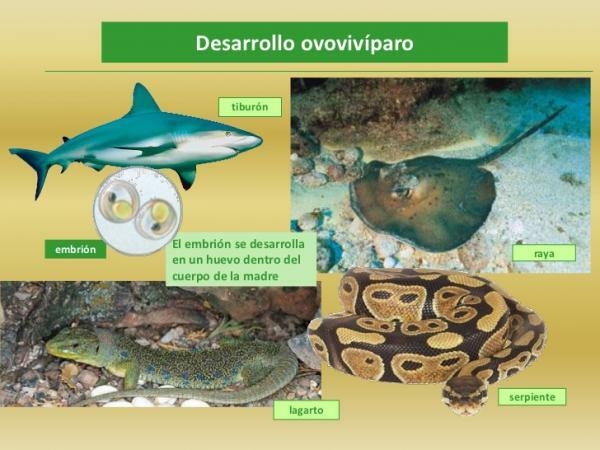
Image: SlideShare
5 differences between viviparous, oviparous and ovoviviparous.
The three kinds of sexual reproduction of animals have many elements in common, but also great differences that cause division to exist. Some of these differences are as follows:
- Viviparous and ovoviviparous are based on a internal fertilization, fertilizing the mother, while oviparous can have a external or internal fertilization, depending on whether they are of the kind of dry or soft eggs.
- The feeding of the young is due to the placenta or other tissues in the viviparous and the nutrients of the egg in the oviparous and ovoviviparous.
- The young of the viviparous, and to a lesser extent of the ovoviviparous, are cared for by the mother, as a kind of maternal instinct, while the oviparous may or may not have this instinct.
- The oviparous reproduction is much more common, largely because it is carried out by many kinds of invertebrates.
- Viviparous and ovoviviparous offspring leave the mother fully formed, while oviparous offspring still need development after going outside.

Image: world family animal - WordPress.com
If you want to read more articles similar to Viviparous, oviparous and ovoviviparous animals: differences, we recommend that you enter our category of biology.


